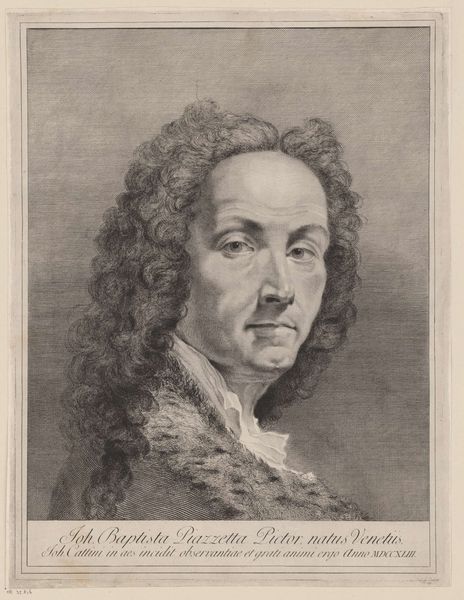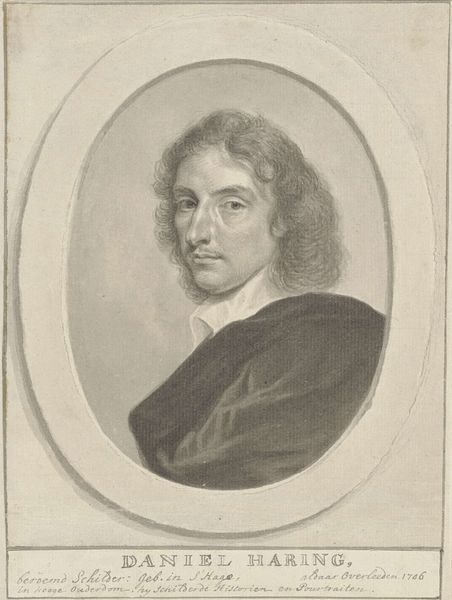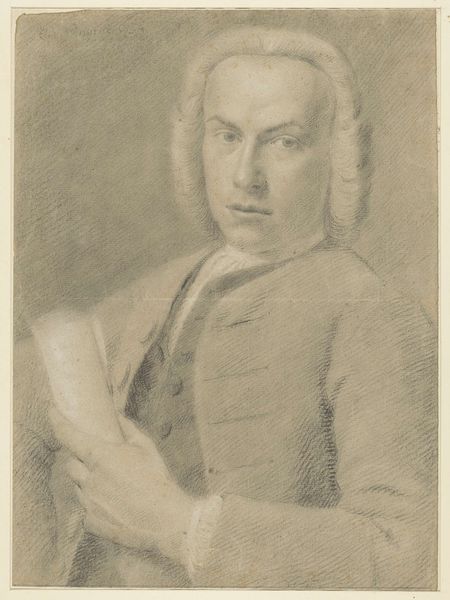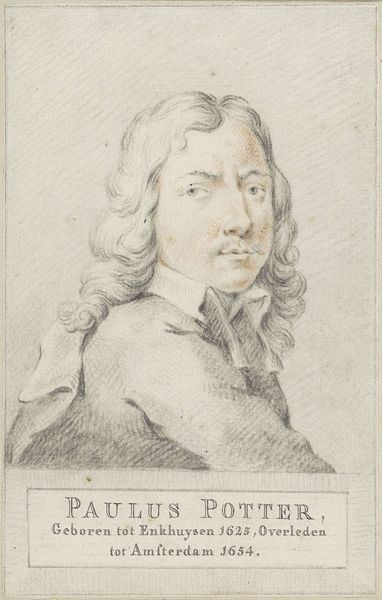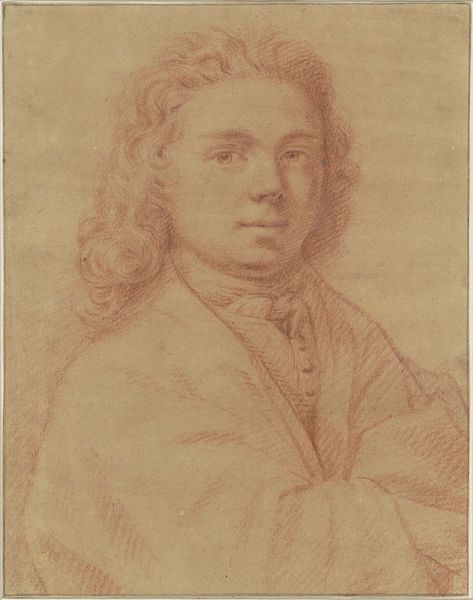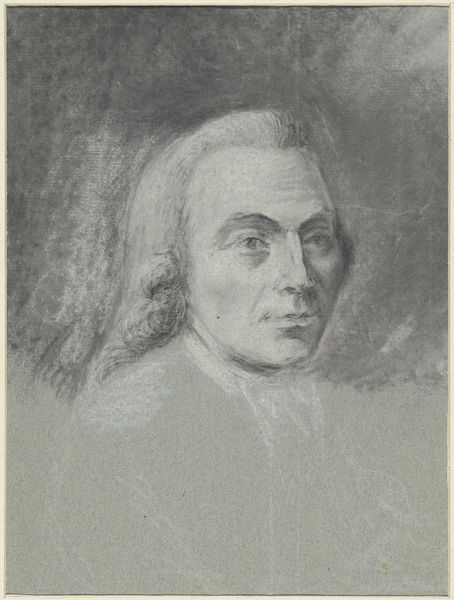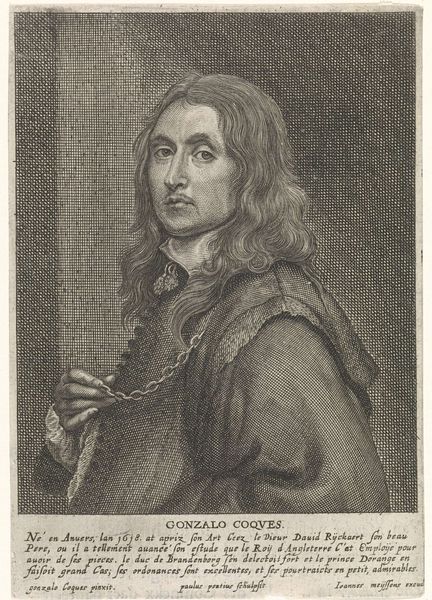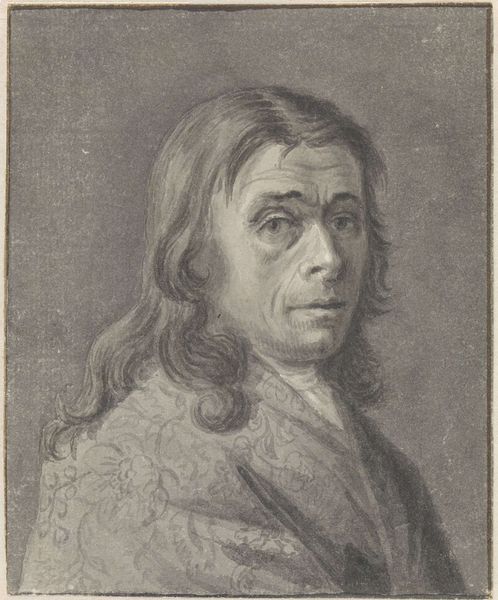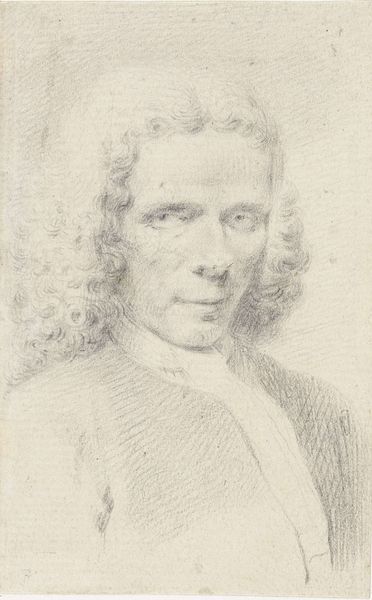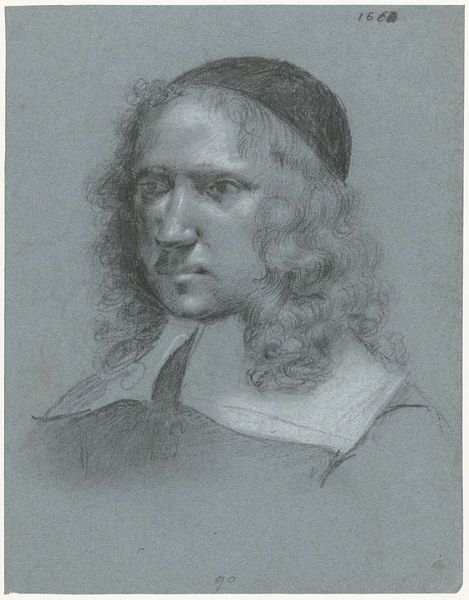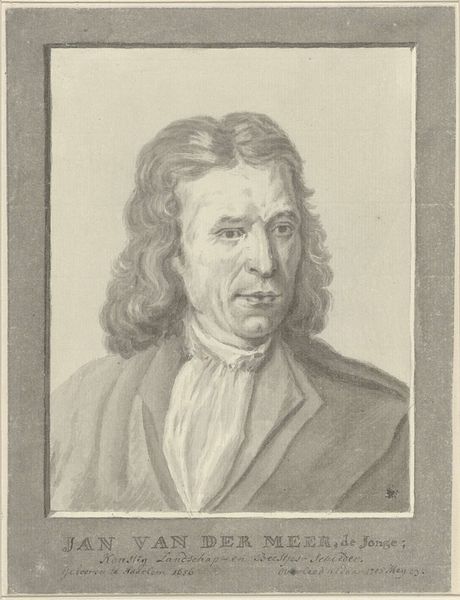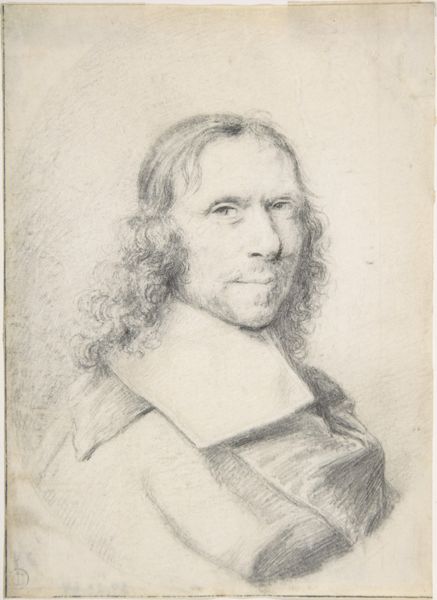
Dimensions: height 427 mm, width 313 mm
Copyright: Rijks Museum: Open Domain
Editor: This is "Portret van Jacob Carpi," a drawing made with pencil and pastel on paper by Jacob de Wit sometime between 1705 and 1754. The monochromatic rendering gives it a subdued, almost melancholic mood. What catches your eye when you look at this portrait? Curator: The eyes are immediately striking, aren’t they? They possess a soft directness. The long flowing hair was very typical of the period, yet look at how the artist rendered it with such nuanced detail, almost like cascading water, suggesting a certain freedom. It projects a romantic air. Do you get a sense of this romanticism as well? Editor: Yes, definitely. It feels very intentional. Do you think that the artist was also attempting to create a symbol of the sitter himself through this medium? Curator: Precisely! The artistic styles of the day became very important to how an artist conveyed the importance of the patron to the rest of society, and later, to history. The medium—pencil and pastel—lends itself to softness and fleeting beauty, doesn't it? Editor: It definitely contributes to the overall delicate mood. Curator: Consider, then, what Carpi’s position in society was. Would this romantic, somewhat pensive portrayal reinforce or perhaps subtly challenge those established ideas? These visual symbols contribute to an ongoing narrative. Editor: It's fascinating how much can be conveyed through seemingly simple choices of style and medium. I see now how the cultural memory is tied into the symbolism of the piece, a really important detail! Curator: Exactly. Each stroke, each shading choice carries weight, contributing to how we understand both the individual and the era. And in turn, those readings get handed down to future generations.
Comments
No comments
Be the first to comment and join the conversation on the ultimate creative platform.
